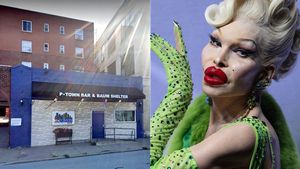In 1985, the lights dimmed on ratskellers across Austria as millions of gallons of Austrian wine were redeployed to melt hazardous ice. An epic scandal in which the country's wine supply was found to have been adulterated with diethylene glycol, an ingredient in antifreeze, would cripple the country's wine industry for several decades to come. One mayor of a town in the heart of Austria's wine country told the New York Times it was the "worst disaster to hit the region since World War II."
But a funny thing happened on the way to recovery: The world discovered that Austria's reputation for cloyingly sweet wines is wholly undeserved. Its rieslings are more complex than their German counterparts, and the dry, minerally white gruner veltliner, a pleasing, easy-drinking wine, has begun to surpass chardonnay as the party wine of choice. That it's nicely priced doesn't hurt.
Now, fans of gruner, which has grown around the Danube since Roman times, have begun to wake up to Austria's other gems, including the frisky Zweigelt, a grape varietal less than 100 years old, and the stylish blaufrankisch. They're both light, summery red wines that have a wonderful spice on the nose. Some of the best, like the 2008 Tinhof, a blaufrankisch, hail either from Burgenland, in the east of the country, or from near Carnuntum, southeast of Vienna, where deep soils and cool winds from the Danube have created an ideal growing environment.
"As a result of the wine scandal in 1985 we have the toughest wine laws in Europe, and that has tremendously increased the quality," says Leo Schneemann, wine director for Wallse, Cafe Sabarsky, and Blaue Gans, a trio of outstanding Austrian restaurants in New York. "Austrian wine is affordable and a good product for young people interested in trying something else." And while the marketing strategy of the Austrian wine board has been based on pushing gruner veltliner as the go-to wine of choice in the U.S., Schneemann is optimistic about the food-friendly reds. He recommends drinking Zweigelt slightly chilled with fish or ham, and blaufrankisch with lamb chops or duck. For those who want to dig deeper, Schneemann suggests neuburger, a white wine with nutty aromas and a creamy body. Like the rest of Austria's wine industry, it's ripe for a comeback.
Four Great Austrian Wines
Keri Kunzle of Maslow 6, a wine store in New York, recommends four of her favorites.
- Karl Steininger Gruner Veltliner Sekt Kamptal Valley A sparkling gruner veltliner from the village of Langenlois in the Kamptal Valley, this is a graceful, elegant wine with a lot of depth. Not quite like champagne, the varietal characteristics of gruner shine through here, with stone fruit, white peaches, and white pepper. Ideal on its own or with food. Pair it with summer salads or asparagus. $30
- Tegernseerhof T-26 Gruner Veltliner 2012 This gruner from the Wachau has a backbone, with great structure and minerality and lovely stone fruits (apricots and nectarines) with white pepper on the nose. On the palate there are more stone fruit notes along with melons and grapefruit. Although the acidity is definitely present, it melds into the wine. $18
- Hillinger Blaufrankisch 2011 A violet-hued, spicy blaufrankisch with brambles and blueberries, it has soft tannins and a sweet earthiness. A good level of acidity leaves your palate fresh. This is great with grilled burgers. $23
- Rosi Schuster Sankt Laurent 2011 A fun alternative to pinot noir, the St. Laurent has lovely red fruits, spicy notes, and excellent acidity. Like pinot, it pairs with a lot of different foods. $23
Photography by Koji Yano




















































